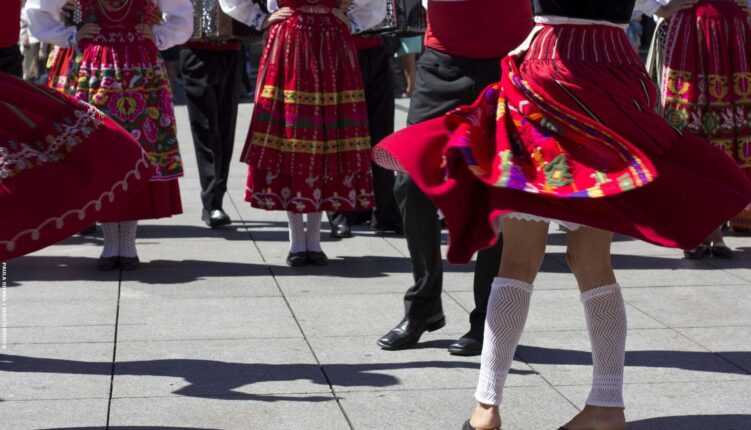Music plays a prominent role in Portuguese culture with traditional folk dancing, ranchos folclóricos, being a true performing art supported by musicians and singers.
Stemming from Portugal’s rural communities, the energetic dancing is accompanied by traditional folk songs and of course a “band” made up of guitars, accordion, tambourine and often a triangle and bagpipes.
The dances are performed in groups, with couples pairing up and completing various routines, often finger snapping and clapping.
Dance and song
Perhaps the most popular dance style in Algarve is the Corridinho. Danced in pairs, the couples rotate as a group.
Dancing to a fast rhythm, they stomp their feet whilst circling, often changing direction. And circling very fast! Click here to see what it looks like.
And to show how it was done in 1987, click here.
As mentioned, the tradition of Portugues folk dancing originated in rural areas, where farming was the main source of income.
Hence many of the songs are taken from farming techniques or terms, such as the Malhão, click here to see an example of the dance.
The opening words in the song that accompany this dance are “Malhão, malhão, o malhão do norte”. Translated,“Winnower, winnower, winnower of the north”.
Traditionally, this dance is popular in Estremadura which is located along the western coast mid-way up the country.
Each dance, as you will have seen in the excerpts mentioned above, has different steps.
For example, the Vira (meaning turn) from the north of Portugal has similar steps to the waltz. The couples revolve with their arms in the air, often changing couples in the dance. See here for an example.
One dance that does not originate from farming is the Pauliteiro. It has been suggested that it is a warrior dance.
Coming from the Miranda (Douro) region in the north east of Portugal it is not often danced elsewhere.
Typically, the men dance this routine using wooden clubs/sticks which are hit against each other in time to the music.
Costume
The men typically wear black trousers, white shirts with no collar, a short black jacket and a hat. Sometimes coloured sashes are worn around their waists, like cummerbunds.
Woman generally wear blouses and colourful skirts that flare out with petticoats underneath (sometimes bloomers also). Depending on the region and even sometimes the dance, the colours and type of clothes worn will alter though.
Portuguese folk dancing is a common sight at most festivals and celebrations. And whilst the adults are dancing in their finery you will usually see children emulating them. Click here to read about festivities around the Popular Saints in August.

